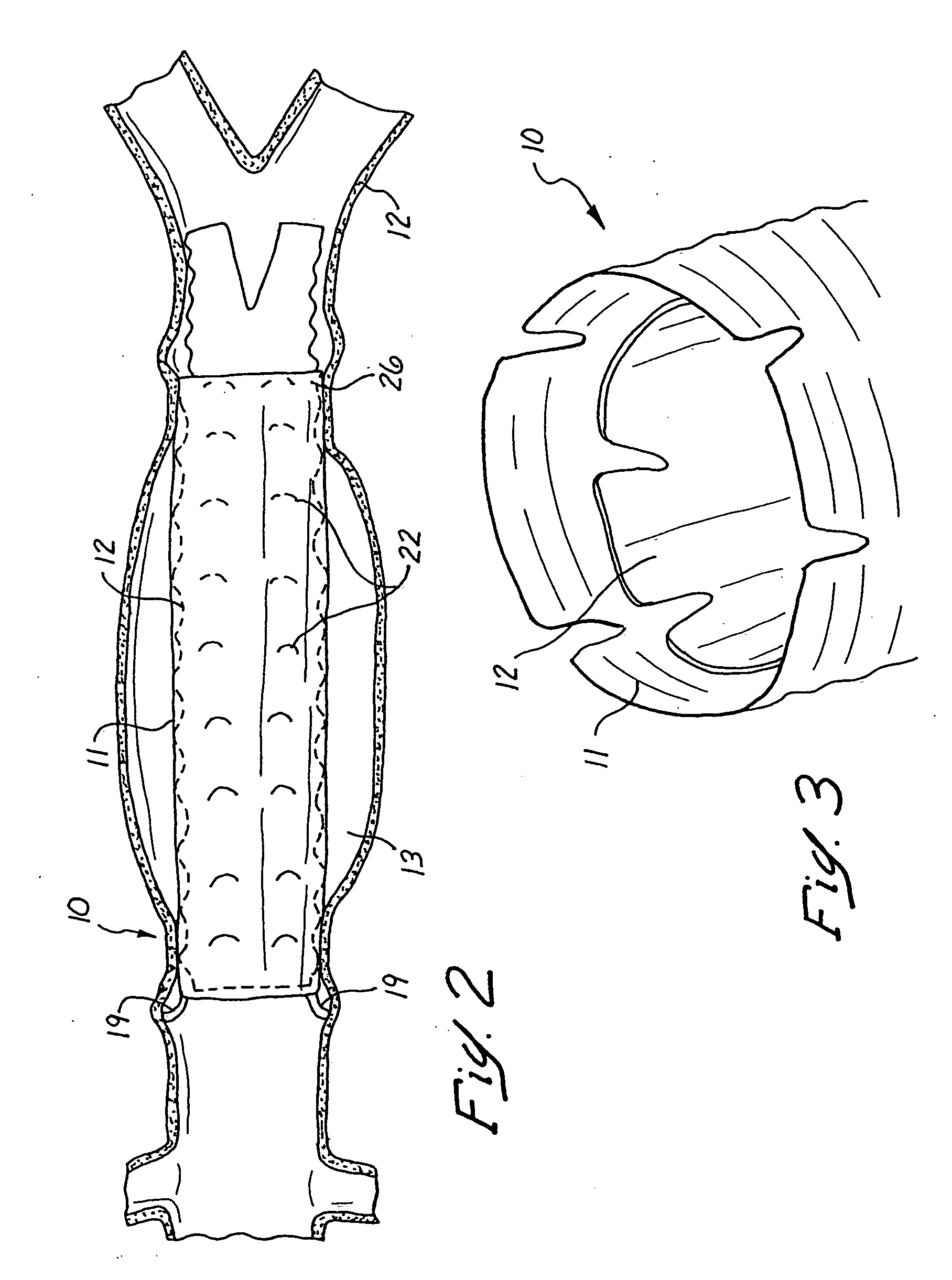Double layered intraluminal graft
a double-layered, intraluminal technology, applied in the field of intraluminal devices, can solve the problems of affecting the size of the artery in which the catheter is inserted, the inability to insertion, and the inability to withstand the insertion, so as to avoid unnecessary bulking
- Summary
- Abstract
- Description
- Claims
- Application Information
AI Technical Summary
Benefits of technology
Problems solved by technology
Method used
Image
Examples
Embodiment Construction
[0072] An intraluminal device according to the present invention is generally shown as 10 in the drawings. The intraluminal device 10 comprises two separate components, a first graft 11 and a second graft 12.
[0073] The device 10 is adapted for insertion transfemorally into a patient to achieve bridging and occlusion of an aneurysm 13 present in the aorta 14. As shown in FIG. 1, the aorta 14 bifurcates to form the common iliac arteries 15 which in turn divide into the internal 16 and external 17 iliac arteries. The external iliac artery in turn forms the femoral artery 18. The first graft 11 is inserted inside a catheter (not shown) and introduced into one of the femoral arteries 18 in a leg of a patient. Once the catheter is located appropriately with its proximal end in the aorta 14, the first graft 11 is ejected from the catheter and expanded using a balloon so that the first graft 11 is in intimate contact along its length and around its full periphery with the surrounding vesse...
PUM
 Login to View More
Login to View More Abstract
Description
Claims
Application Information
 Login to View More
Login to View More - R&D
- Intellectual Property
- Life Sciences
- Materials
- Tech Scout
- Unparalleled Data Quality
- Higher Quality Content
- 60% Fewer Hallucinations
Browse by: Latest US Patents, China's latest patents, Technical Efficacy Thesaurus, Application Domain, Technology Topic, Popular Technical Reports.
© 2025 PatSnap. All rights reserved.Legal|Privacy policy|Modern Slavery Act Transparency Statement|Sitemap|About US| Contact US: help@patsnap.com



